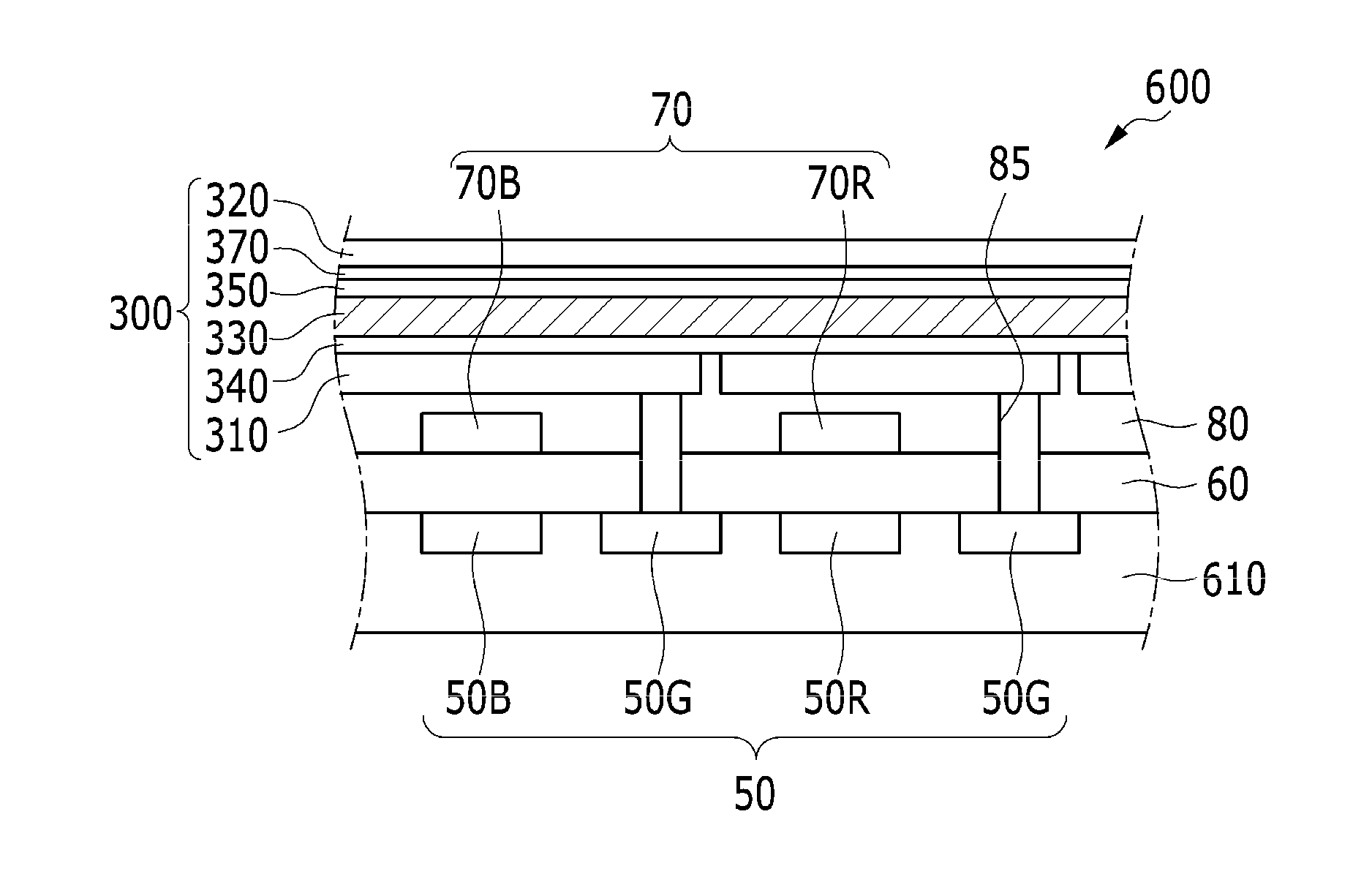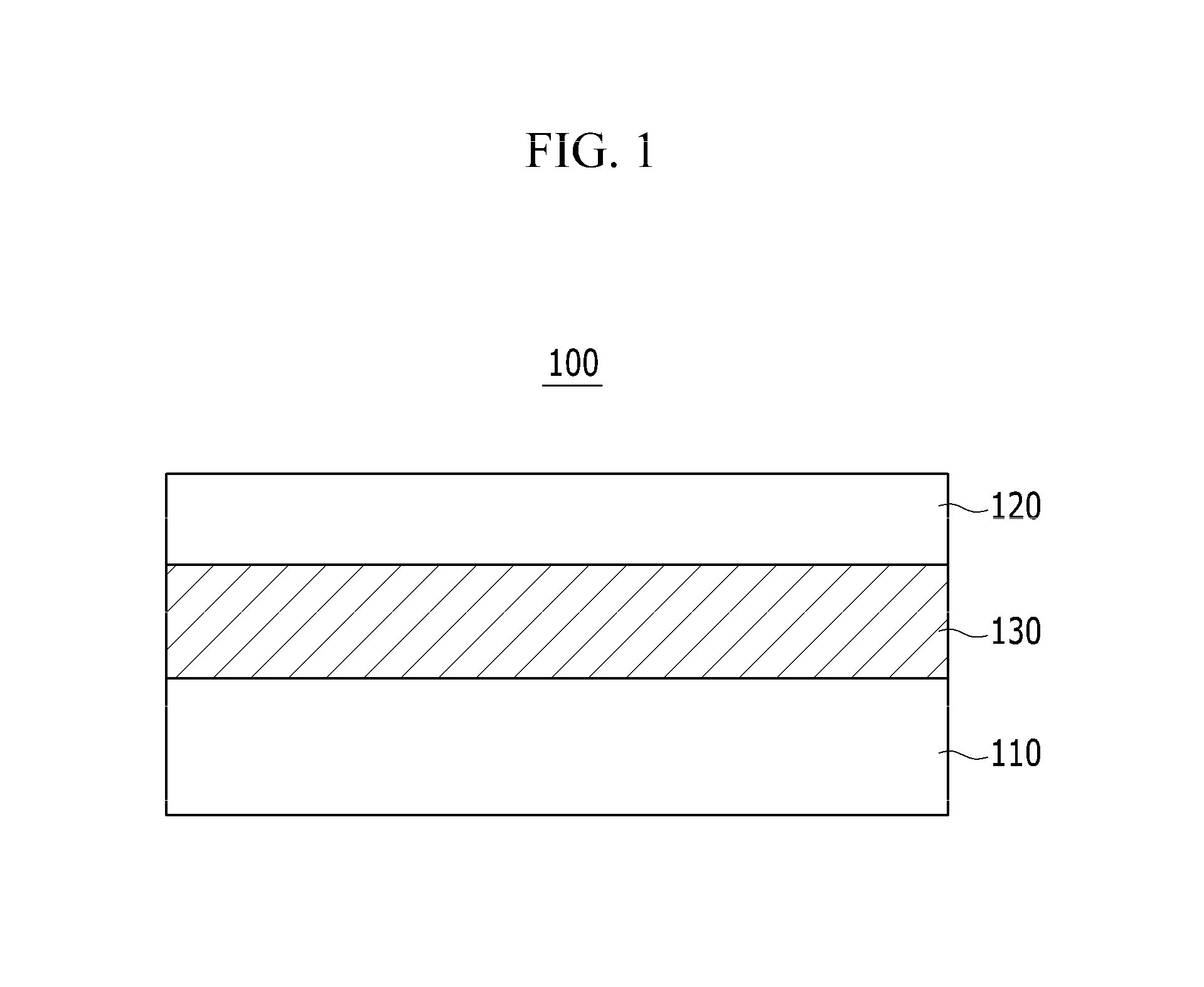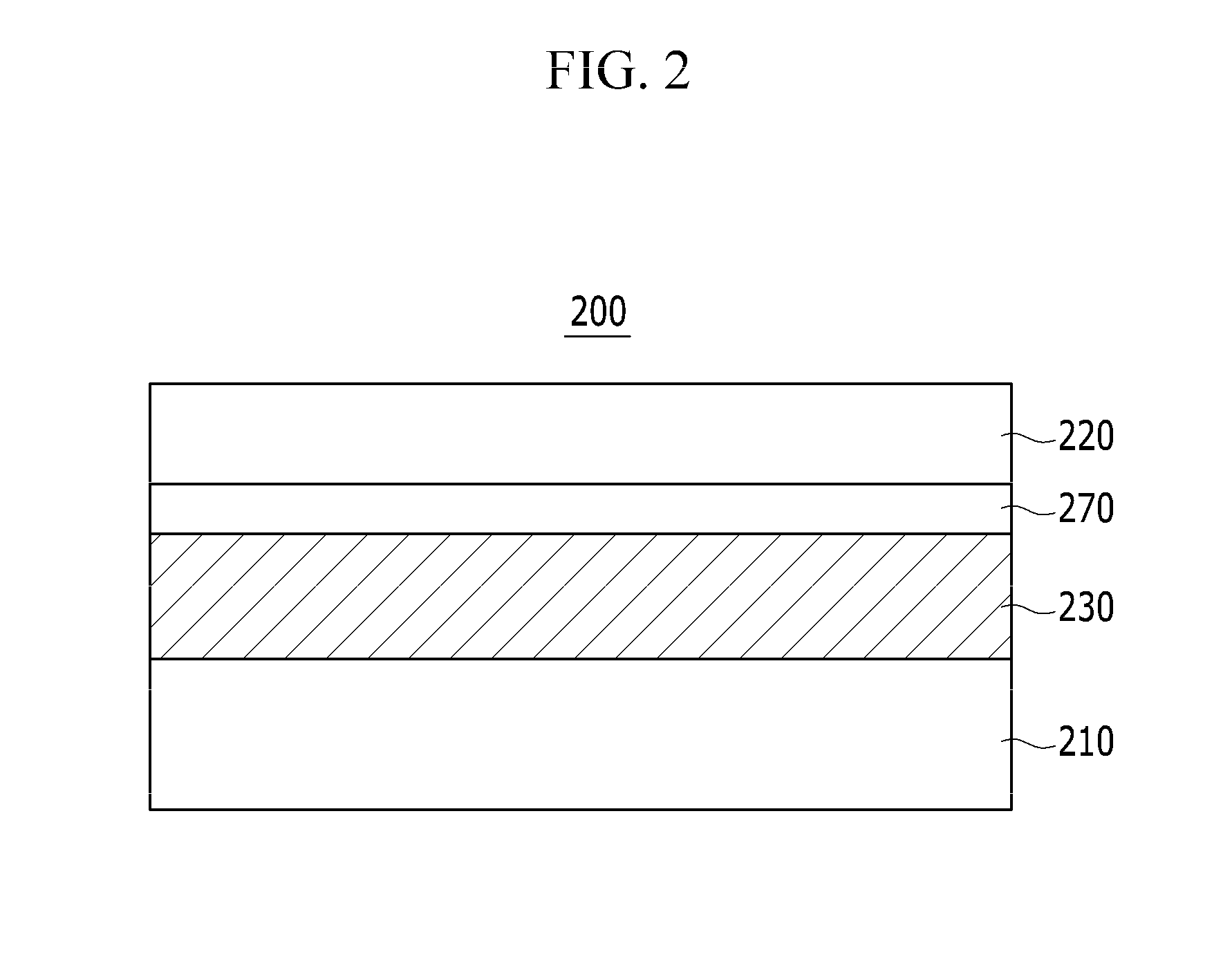Organic photoelectronic device and image sensor
a photoelectronic device and image sensor technology, applied in thermoelectric devices, solid-state devices, radiation control devices, etc., can solve problems such as deterioration of sensitivity, achieve the effects of reducing leakage current, ensuring photoelectric conversion efficiency, and reducing incident light loss
- Summary
- Abstract
- Description
- Claims
- Application Information
AI Technical Summary
Benefits of technology
Problems solved by technology
Method used
Image
Examples
example 1
[0124]A lower electrode that is about 100 nm-thick is formed by sputtering ITO on a glass substrate. Subsequently, a 5 nm-thick lower charge auxiliary layer is formed on the lower electrode by thermally evaporating molybdenum oxide (MoOx, 02: 0.2 sccm), manufacturing an organic photoelectronic device.
example 2
[0125]An organic photoelectronic device is manufactured according to the same example method as in Example 1, except for additionally forming a buffer layer by thermally evaporating molybdenum oxide (MoOx, 0<x≦3) to be about 10 nm thick before forming the upper electrode.
example 3
[0126]An organic photoelectronic device is manufactured according to the same example method as Example 1, except for additionally forming a buffer layer by thermally evaporating tungsten oxide (WOx, 0<x≦3) to be about 10 nm thick before forming the upper electrode.
PUM
 Login to View More
Login to View More Abstract
Description
Claims
Application Information
 Login to View More
Login to View More - R&D
- Intellectual Property
- Life Sciences
- Materials
- Tech Scout
- Unparalleled Data Quality
- Higher Quality Content
- 60% Fewer Hallucinations
Browse by: Latest US Patents, China's latest patents, Technical Efficacy Thesaurus, Application Domain, Technology Topic, Popular Technical Reports.
© 2025 PatSnap. All rights reserved.Legal|Privacy policy|Modern Slavery Act Transparency Statement|Sitemap|About US| Contact US: help@patsnap.com



